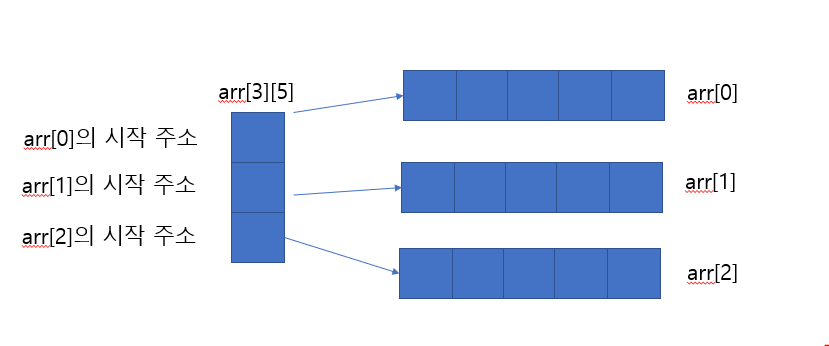[Java] 얕은 복사와 깊은 복사
배열의 복사와 관련해서는 얕은 복사와 깊은 복사의 차이점을 알아야 한다.
얕은 복사(shallow copy)
- 한 쪽에서 수정이 발생되면 다른쪽에도 영향을 끼쳐 같아지게 된다.
- 가능한 이유는 얕은 복사가 주소값을 복사하기 때문에 주소로 값을 참조하여 값이 변경되면 해당 값을 참조하고 있는 배열들의 값이 변경된다.
- 즉, 복사된 배열이나 원본 배열이 변경될 때, 함께 변경된다. = 연산자는 얕은 복사를 수행한다.
1 | int[] a = new int[2]; |
- 위의 코드처럼 1차원 배열을 = 연산자를 사용해 얕은 복사를 진행하게 되면 복사된 배열의 값이 변경될 때, 원본 배열의 값도 변경된다.
- 2차원 배열도 마찬가지이다. 다음 코드를 보자.
1 | int[][] a = new int[2][2]; |
- = 연산자를 이용해 2차원 배열에서 얕은 복사가 이뤄졌다. 그렇다면 이러한 문제를 어떻게 해결할 수 있을까? 깊은 복사를 사용하자!
깊은 복사(Deep copy)
- 깊은 복사는 주소값을 참조하는 것이 아닌, 새로운 메모리 공간에 값을 복사하는 것이기 때문에 원본 배열이 변경되어도 복사된 배열에 전혀 상관이 없다.
- 따라서 배열을 복사한 후에 한쪽 값을 수정해도 다른 배열에 영향을 끼치지 않는다.
1) 1차원 배열의 깊은 복사
- 1차원 배열의 깊은 복사는 배열.clone() 함수를 이용하면 간단하게 할 수 있다.(일반 자료형의 경우)
- 혹은 간단하게 for문을 돌며 넣어줘도 된다.
1 | public static void main(String[] args) { |
주의

- 객체 배열의 경우,
.clone()을 사용하면 깊은 복사가 안된다. 이유는 객체는 주소값을 가지고 있기 때문이다. 마찬가지로 2차원 배열의 경우도 각각 row에 대한 주소값을 가지고 있기 때문에 deepCopy가 안된다.
2) 1차원 객체 배열의 경우, 깊은 복사
1 | private static void ObjectArray() { |
- 이처럼 1차원 객체 배열을 복사하기 위해서는 for문을 돌며 넣어주는데 이때마다 새로운 객체를 new로 생성하며 직접 값을 넣어주어야 한다. 그래야 다른 새로운 객체를 담은 배열로 복사된 배열을 가질 수 있다.
3) 2차원 배열의 깊은 복사
- 이중 for문을 순회하는 방법
- 기본 자료형인 경우, 간단하게 사용할 수 있다.
1 | private static void TwoArrayDeepCopy() { |
- 이처럼 값을 직접 넣어줘도 deepCopy가 잘된다. 배열을 복사한 이후, 복사한 배열의 값을 변경해도 원래 배열에 영향을 끼치지 않는 깊은 복사가 잘 이루어졌다.
- System.arraycopy를 이용하는 방법
- 기본 자료형인 경우, 아래 코드처럼 System.arraycopy 메소드를 이용해 2차원 배열을 복사할 수 있다.
- 1차원 배열을 2차원 배열의 row 길이만큼 복사한다고 생각하면 된다.
- 1번에서 사용한 배열과 같은 배열을 사용했다.
1 | private static int[][] deepCopyUseSystemArrayCopy(int[][] original) { |
- 1번과 동일한 결과를 보이며, deepCopy가 이루어졌음을 확인할 수 있다.
4) 2차원 객체 배열의 복사
- 2차원 객체 배열의 복사를 할 경우, arraycopy나 clone을 이용해서 복사할 수 없다.
- 그래서 for문을 돌면서 값을 직접 복사하며, 객체를 새로 생성해야 한다.
1 | public static void main(String[] args) { |
- 복사된 배열의 값을 변경해도 원본 배열에 영향을 끼치지 않으며, 그 반대도 성립한다. 따라서 deepCopy가 잘 이루어진 것을 확인할 수 있다.
